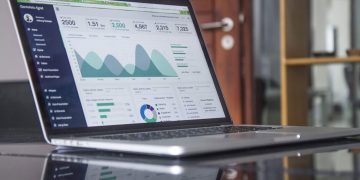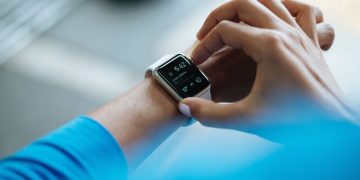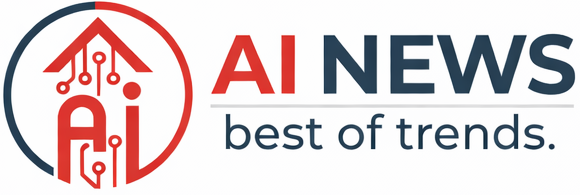Artificial Intelligence
The AI Spending Frenzy Is Propping Up the Real Economy, TooLydia DePillis | The New York Times
“Companies will spend $375 billion globally in 2025 on AI infrastructure, the investment bank UBS estimates. That is projected to rise to $500 billion next year. Investment in software and computer equipment, not counting the data center buildings, accounted for a quarter of all economic growth this past quarter, data from the Commerce Department shows.”
Artificial Intelligence
Anthropic Settles High-Profile AI Copyright Lawsuit Brought by Book AuthorsKate Knibbs | Wired
“Anthropic has reached a preliminary settlement in a class action lawsuit brought by a group of prominent authors, marking a major turn in one of the most significant ongoing AI copyright lawsuits in history. The move will allow Anthropic to avoid what could have been a financially devastating outcome in court.”
Under Pressure After Setbacks, SpaceX’s Huge Rocket Finally Goes the DistanceStephen Clark | Ars Technica
“The largely successful mission for the world’s largest rocket was an important milestone for SpaceX’s Starship program after months of repeated setbacks, including three disappointing test flights and a powerful explosion on the ground that destroyed the ship that engineers were originally readying for this launch.”
Computing
China Is Building a Brain-Computer Interface IndustryEmily Mullin | Wired
“Jointly authored in July by seven departments within the Chinese government—including the Ministry of Industry and Information Technology, the National Health Commission, and the Chinese Academy of Sciences—the new policy document lays out a road map for China to achieve breakthroughs in BCI technology by 2027 and build an internationally competitive industry by 2030.”
Tech
Researchers Are Already Leaving Meta’s New Superintelligence LabZoë Schiffer | Wired
“At least three artificial intelligence researchers have resigned from Meta’s new superintelligence lab, just two months after CEO Mark Zuckerberg first announced the initiative. Two of the staffers have returned to OpenAI, where they both previously worked, after less than one-month stints at Meta, Wired has confirmed. …Meta executives have reportedly struggled to combat bureaucratic and recruitment issues related to its AI initiatives.”
Energy
Nvidia, Google, and Bill Gates Help Commonwealth Fusion Systems Raise $863MTim De Chant | TechCrunch
“The Massachusetts-based company has raised nearly $3 billion to date, the most of any fusion startup. …Fusion power has long been promised as a nearly limitless energy source, though it wasn’t until recently that investors considered it a bet worth placing. As advances in computing and AI have quickened the pace of research and development, the sector has become a hotbed of startup and investor activity.”
Future
Taco Bell Rethinks Future of Voice AI at the Drive-ThroughIsabelle Bousquette | The Wall Street Journal
“Since last year, Taco Bell has rolled out voice AI-powered ordering at more than 500 drive-through locations, and now the chain is realizing that not every customer is a fan of the new tech. Some have taken to social media to complain about glitches and delays. Others are simply just weirded out. And then there is a contingent intent on trolling the system with orders like, ‘18,000 cups of water, please.'”
Energy
Google’s Still Not Giving Us the Full Picture on AI Energy UseCasey Crownhart | MIT Technology Review
“I was excited to see [Google’s AI energy use] report come out, and I welcome more openness from major players in AI about their estimated energy use per query. But I’ve noticed that some folks are taking this number and using it to conclude that we don’t need to worry about AI’s energy demand. That’s not the right takeaway here. Let’s dig into why.”
Artificial Intelligence
Google’s AI Model Just Nailed the Forecast for the Strongest Atlantic Storm This YearEric Berger | Ars Technica
“This doesn’t mean Google’s model will be the best for every storm. In fact, that is very unlikely. But we certainly will be giving it more weight in the future. Moreover, these are very new tools. Google’s Weather Lab, along with a handful of other AI weather models, has already shown equivalent skill to the best physics-based models in a short time. If these models improve further, they may very well become the gold standard for certain types of weather prediction.”
Future
AI Is Eliminating Jobs for Younger WorkersWill Knight | Wired
“The researchers discovered several strong signals in the data—most notably that the adoption of generative AI coincided with a decrease in job opportunities for younger workers in sectors previously identified as particularly vulnerable to AI-powered automation (think customer service and software development). In these industries, they found a 16 percent decline in employment for workers aged 22 to 25.”
Robotics
America’s Newest Auto Plant Is Full of Robots. It Still Needs the Human Touch.John Keilman | The Wall Street Journal
“The factory, which opened near Savannah, Ga., late last year, deploys 750 robots, not counting the hundreds of autonomous guided vehicles that glide across the floor. About 1,450 people work alongside them. That roughly 2-to-1 ratio of humans to robots compares with the US auto-industry average of 7-to-1.”
Artificial Intelligence
A Better Way to Think About AIDavid Autor and James Manyika | The Atlantic
“Rather than asking AI to hurl itself over the [automation] abyss while hoping for the best, we should instead use AI’s extraordinary and improving capabilities to build bridges. What this means in practical terms: We should insist on AI that can collaborate with, say, doctors—as well as teachers, lawyers, building contractors, and many others—instead of AI that aims to automate them out of a job.”
Source link
#Weeks #Awesome #Tech #Stories #Web #August






























